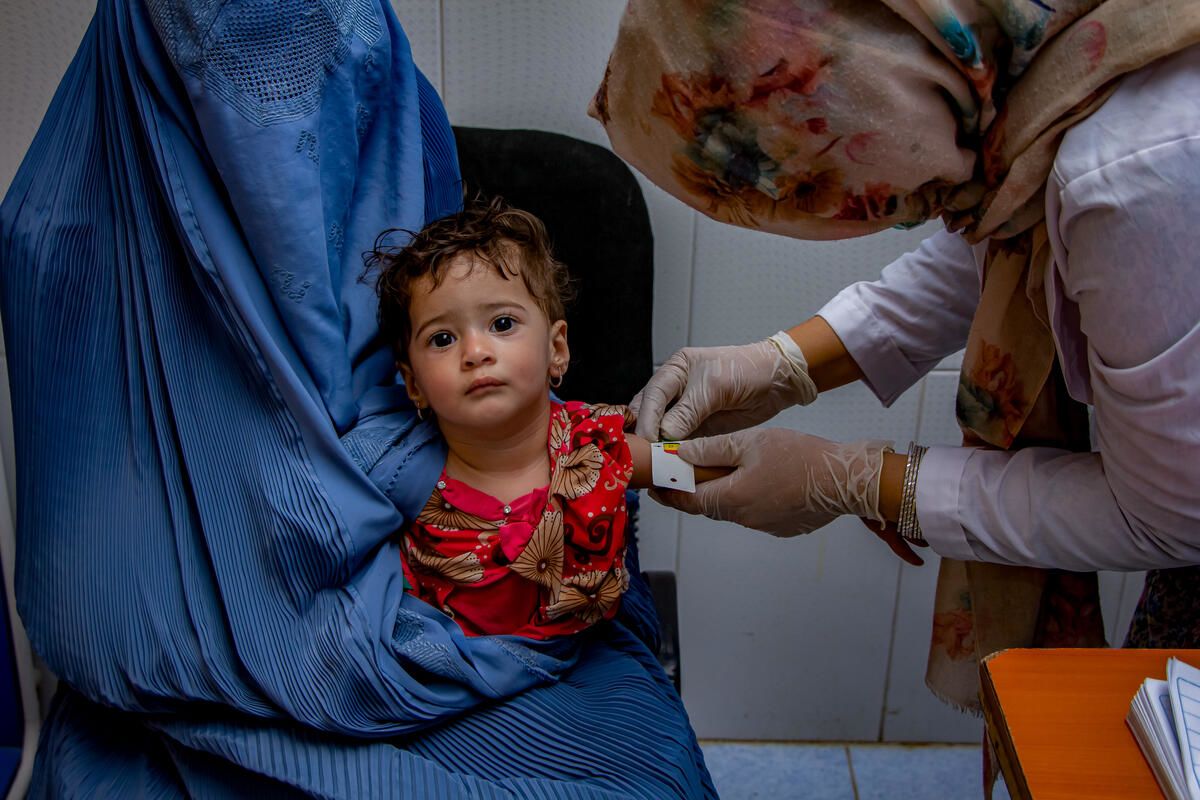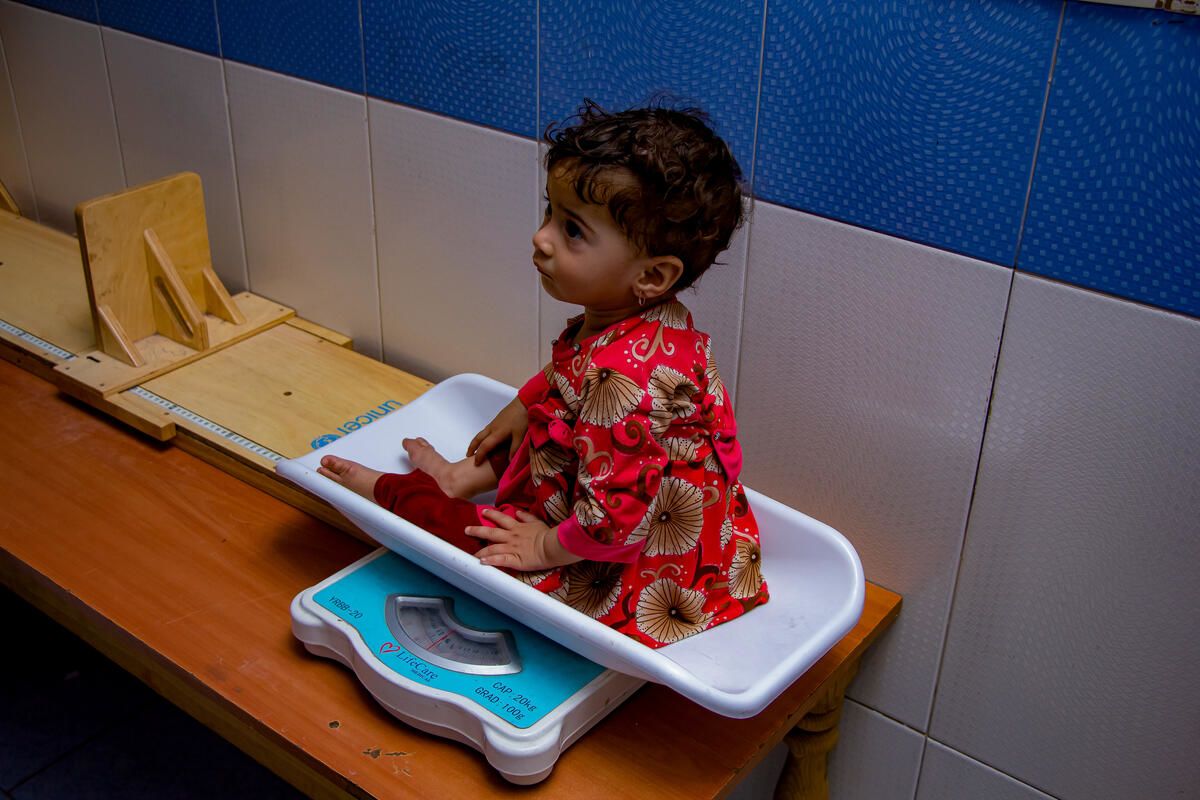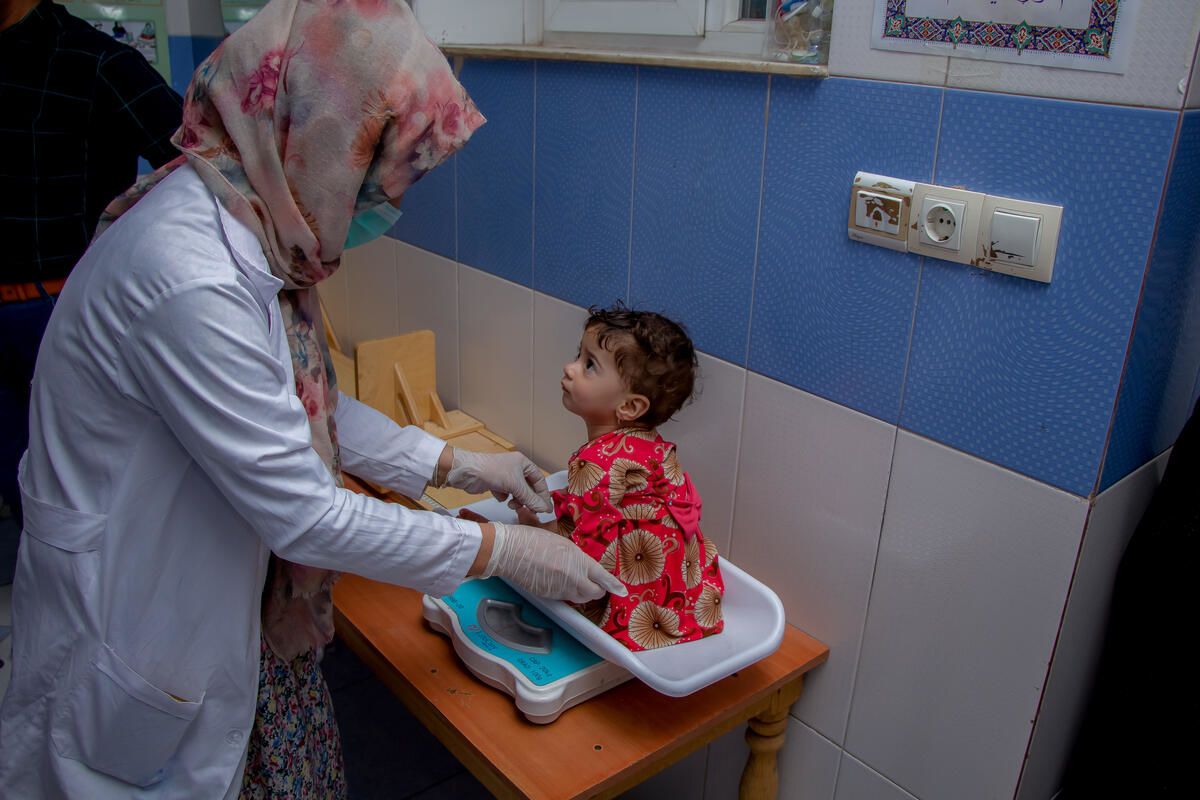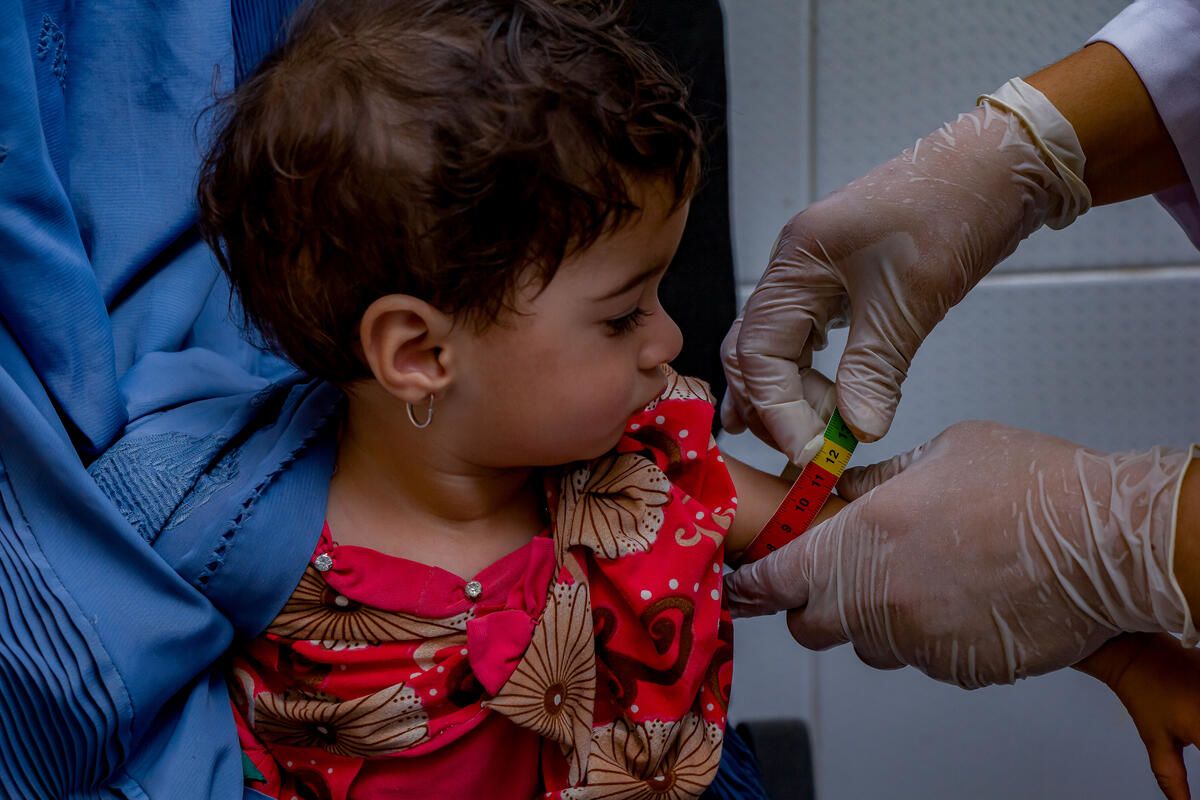The double punch of malnutrition and COVID-19

When medical staff are off with COVID-19 and your child is getting thinner and weaker, discovering nutrition staff have been seconded to the health clinic is a godsend.
Amidst the hustle and bustle of Baba-e-Barq Comprehensive Health Center in Herat, Afghanistan, a middle-aged woman cradling an ill-nourished child in her arms, is waiting for her turn.
"I am a mother of five children,” 45-year-old Maleka tells me. “Elnaz [the malnourished girl child] is my youngest child. My husband was a day laborer and had a moderate income. However, he lost his income due to the spread of COVID-19 in Herat.
“As a result, I did not have enough food to eat and could not produce sufficient milk to breastfeed Elnaz. That is why Elnaz became weaker every day. She was diagnosed as severely malnourished and I could not stop worrying,” Maleka explains.
“She was weak and didn’t grow much, but I did not know what to do.”
Maleka and her family live in an area with no hospital, only a small health facility overwhelmed with patients. During the pandemic, most of the health workers there were quarantined after catching COVID-19. As a result, the clinic faced a shortage of health personnel and an influx of patients.
The World Vision team in Afghanistan responded by providing medical and non-medical supplies including nutrition services and nurses. This kind of multi-sector response—looking at both health and nutrition—is critical, especially for a fragile context where health provision and information about proper nutrition doesn’t get to everyone who needs it. Between March 2020 to May 2021, in response to COVID-19, our teams have provided life-saving health and nutrition services to 204,571 children in Afghanistan.
The news that the clinic was staffed again persuaded Maleka to take Elnaz to the health centre to see if they could help stop her weight loss.
“My life situation was bad and the coronavirus made it worse... [Over] three months my baby lost a lot of weight."
"I heard from my neighbor that a nutrition doctor had come to the clinic. I finally decided to bring her to the clinic for an examination.”
Elnaz was diagnosed with acute malnutrition and, as a result, Maleka received therapeutic food—a high-energy peanut paste, filled with nutrients and vitamins—which she fed several times a day to Elnaz.
“My daughter is putting on weight since she started eating the food provided by the health center. I hope she gets healthy soon and the COVID-19 pandemic ends,” says Maleka.
“If the doctors hadn’t helped, I am not sure my daughter would have made it.”
Parwana, 24, is one of the nurses treating Elnaz on her return visit to the clinic. “Each day, we have about 20 patients,” she said. “Most of them are mothers bringing their malnourished children. Due to COVID-19 pandemic and the bad economic situation of the families, the health facility is always busy, but we don’t close our doors until all patients are seen.”
As Maleka dresses her daughter and makes their way out of the clinic, she walks past a long line of other mothers are waiting to see the clinic staff. Many are dressed in colorful wraps or wearing traditional burqas and carrying their children in their arms.
According to the United Nations Children's Fund (UNICEF), the number of malnourished children in Afghanistan increased from 690,000 in January this year to 780,000 in May; the figure shows a 13% increase in just a few months. Four out of 10 Afghan children currently suffer from malnutrition in Afghanistan. Malnutrition occurs when families continue to eat poor diets. Human food security has been further affected by the COVID-19 pandemic, and this has had social implications.
Women and children have been disproportionately affected by the COVID-19 pandemic. Food insecurity, malnutrition and lack of access to health, hygiene and sanitation facilities worsened the situation for vulnerable households. Treating malnourished children in not new for World Vision. Globally, over the past decade, 89% of the severely malnourished children we treated made a full recovery. Nevertheless, trying to treat children during a pandemic is much more difficult.
In Afghanistan, as part of our response to COVID-19, and as part of our contribution to achieving ensuring healthy lives and promoting wellbeing for all ages (towards SDG 3) we with local communities to get children into school; get homeless children off the streets; end violence against children; and help families provide their own livelihoods, so children are less likely to suffer the impact of poverty.
Learn more about World Vision Afghanistan’s work on its website and YouTube page



